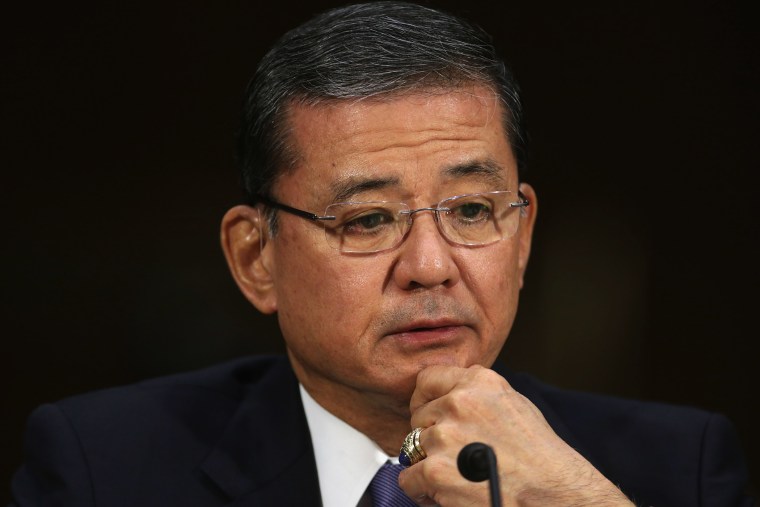Erik Shinseki, who resigned Friday as secretary of the Department of Veterans Affairs, first came to prominence for stating too bluntly the cost of war. He now leaves office because the VA was unable to manage that cost.
The proximate cause of Shinseki’s resignation is a scandal engulfing the Phoenix VA hospital. A damning inspector general’s report revealed that veterans there were waiting on average 115 days for their first appointments with primary care doctors. The wait is supposed to be no longer than 14 days.
The average VA wait time to see any doctor, according to an internal VA estimate, is 21 days -- not much longer than the private-sector average of 18.5 days. That 21-day estimate is based on automatic date stamps, and therefore relatively difficult to manipulate. But according to the IG report, the Phoenix VA staff nonetheless managed to evade the date stamp, either by delaying data entry or by never entering the names into the computer system at all. If enough other VA hospitals did the same, then the national wait time estimate of 21 days won’t be worth much.
There is still some reason to believe the scheduling problem may be less national in scope than is generally supposed. To the extent it’s driven by a doctor shortage, that shortage appears to be localized rather than nationwide. The VA’s 18% growth in patient load between 2005 and 2013, according to a VA source, was matched almost precisely by a 16% growth in the number of primary care providers. The worst delays, according to internal VA calculations — which, again, won’t prove accurate if the abuses are sufficiently widespread — occurred in the Northwest, the South, and the Southwest.
Another reason to question how widespread the scheduling problem may be is that a 2013 survey conducted outside the agency found VA hospital customer satisfaction, at 82%, only one percentage point below the private-sector average. VA hospitals even received an 81% ranking for “accessibility.” If veterans all over the country were incensed about interminable wait times, one would not expect these scores to be so high.
But if the jury’s still out on whether long VA wait times for doctors occur nationwide, no such doubt exists about the long delays veterans are experiencing to receive disability benefits. Since 2000, VA disability payments have almost doubled, from $15 billion to more than $35 billion annually. Yet the backlog of pending disability claims stands at 344,000. Shinseki actually presided over a drastic reduction in that backlog—it was 611,000 claims a year ago. Still, 344,000 is a lot of disability claims.
Why so many? Because half the veterans of the Iraq and Afghanistan wars apply for disability, according to Linda Bilmes of Harvard’s Kennedy School. That’s up from 40% of all veterans of 1991’s Gulf War claiming disability, and substantially higher than the proportion claiming disability from the Vietnam War.
Why? Partly it’s because medical science has advanced to the point where it can save many more lives among the seriously injured. In Vietnam, Bilmes says, three-and-a-half soldiers were wounded for every soldier killed. Today, seven solders are wounded for every soldier killed.
Another reason there are so many disability claims among veterans of the last decade’s wars is that the number of disabling conditions has been greatly expanded. The number of disabling conditions per claim is higher, too. Vietnam veterans filing for disability claimed three disabling conditions on average; veterans from Iraq and Afghanistan claim eight to 10.
Are some of these soldiers taking advantage of the VA’s disability program simply because it’s tough to get a job in the current economy? No doubt. But if the VA’s approval rate is any measure, that proportion is very small; 98% of all disability claims get approved.
This is the cost of war that Shinseki can’t manage, nor anyone else: Half the people who go to war today come back damaged in the VA’s official estimation. So high a human toll is a fact that the U.S. has yet to come to terms with.
